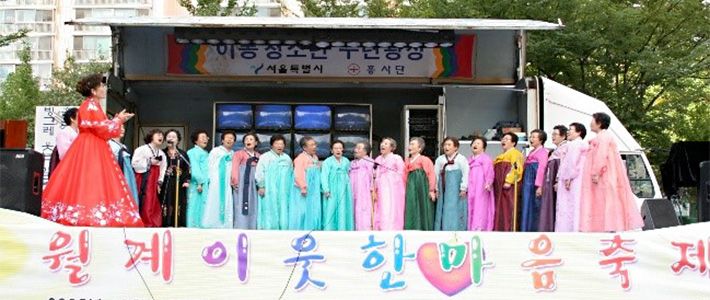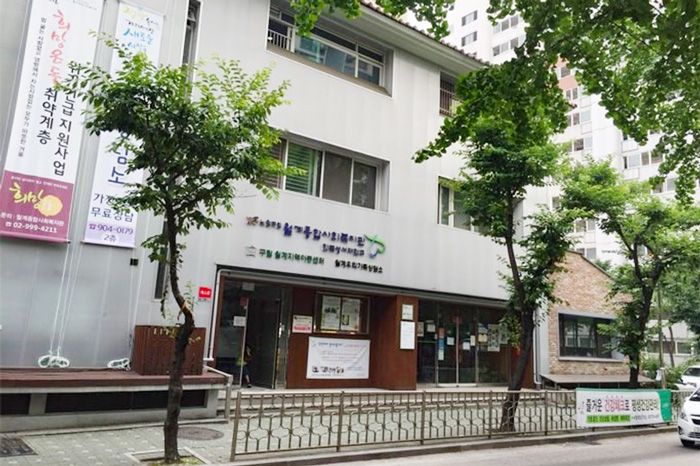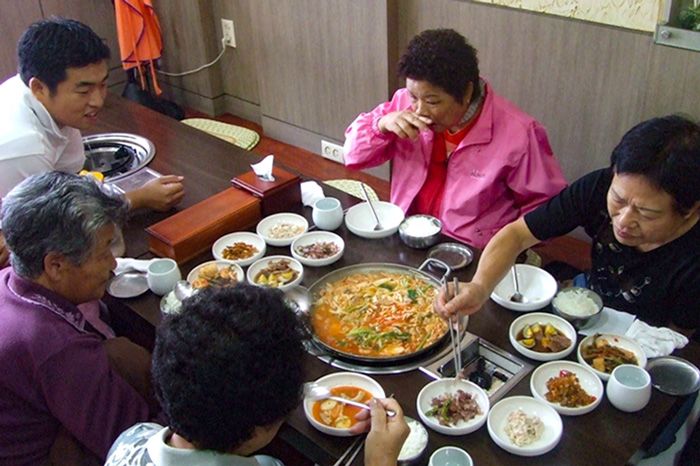
Aging in Japan and Across Asia
The Wolgye Social Welfare Center’s “Beautiful Neighbors” Program
Society- English
- 日本語
- 简体字
- 繁體字
- Français
- Español
- العربية
- Русский
Social Welfare Centers and Local Communities
In South Korea, social wellbeing in local communities is largely supported by social welfare centers. The history of these centers goes back to the “settlement movement” that took root in Britain and the United States at the turn of the twentieth century, which saw the construction of residences designed to fight societal ills by encouraging more interaction among people of different classes. It was not until the late 1980s, however, that social welfare centers took on the key role they currently play in supporting community welfare in South Korea. Laws and regulations were enacted to make it easier to open such facilities, and they were duly established around the country.
The concept underlying these centers was that poverty and other social problems, along with welfare issues, should be addressed not only through policy and organization at the national level but also by harnessing the energies of local communities and private organizations. Financial and other support offered by the government allowed the number of social welfare centers to increase rapidly. In 1988, there were only 35 in all of South Korea; currently, in 2016, there are 457.
Welfare centers run broadly focused programs for the entire community, not only its older members. However, because programs target low-income residents in particular, and the majority of those with low incomes are older, it is fair to say that providing welfare services to older members of the community accounts for a majority of most of the centers’ activities.
The services welfare centers offer older residents take a variety of forms, but one representative example is the “Beautiful Neighbors” program at the Wolgye Social Welfare Center in Nowon, Seoul.
 Wolgye Social Welfare Center, home of the “Beautiful Neighbors” program.
Wolgye Social Welfare Center, home of the “Beautiful Neighbors” program.
Providing Older Residents with What They Need
The “Beautiful Neighbors” program is essentially an exchange: local businesses donate goods and services needed by the residents, and in return the recipients of these donations take part in a range of community and business activities. The goal is to make the community a better place to live by encouraging mutual cooperation between local businesses and residents.
Wolgye-dong is home to many low-income older residents. Their chief needs are food, healthcare, and other personal care services such as grooming and bathing facilities. Social workers visit businesses that can meet these needs to request donations: restaurants and supermarkets for food, clinics and pharmacies for healthcare, barbers and beauty salons for grooming, and public baths and saunas for bathing. For example, a restaurant might agree to serve three people per day a free meal, or a healthcare clinic might offer a free consultation to three patients per day. The social welfare center, which administers the program, makes the necessary arrangements for older residents to visit these businesses and take them up on their offers. The residents who receive the donated goods and services then participate in advertising activities for the businesses or volunteer community work.
The “Beautiful Neighbors” program began in 2003 with the realization that although many businesses are reluctant to donate money, donating goods or services can be a much lighter burden, presenting a way to break through financial difficulties in the field and make full use of the community’s resources. The success of the Wolgye-dong program has helped the model to spread throughout Nowon. It is currently on the verge of implementation throughout greater Seoul and the rest of the country.
 Older residents enjoying a meal donated by a restaurant.
Older residents enjoying a meal donated by a restaurant.
 A restaurateur (left) stands with a welfare center social worker after signing up for the “Beautiful Neighbors” program.
A restaurateur (left) stands with a welfare center social worker after signing up for the “Beautiful Neighbors” program.